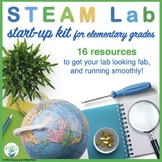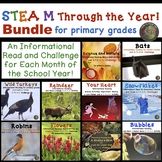Robins Nonfiction Text for Primary Grades and Build a Nest STEM Challenge
- PDF
Also included in
- This bundle includes everything you need to get started with your STEM lab. These are all the things I wish I had had when I started my lab! Purchasing this bundle WILL SAVE YOU HOURS of TIME searching for and making things! It will also SAVE YOU MORE THAN 30% over buying these products separatelPrice $70.00Original Price $102.00Save $32.00
- This is a bundle of four non-fiction texts and coordinating STEM challenges. Now you can have a challenge for each quarter! Recording sheets for use with the readings and complete directions for the challenges are included. These challenges allow the students' independence and creativity to shine!Price $11.00Original Price $15.50Save $4.50
- This bundle includes 10 STEM of our resources; one for all the month of the school year! Each resource has a science reading passage, recording sheets, and a STEAM challenge. Each is aligned with the NGSS and CCS.❤️Click Here to Follow Us!Related Resources⭐ Christmas: Informational Reading about CaPrice $28.00Original Price $40.00Save $12.00
- Are you looking for spring science and STEAM challenges to do with your primary grade students? You can have more fun and save money, all while learning, with this bundle! Several of the resources incorporate ELA too.❤️Click Here to Follow Us!Related Resources⭐ Accountable Talk Posters for the SciePrice $17.00Original Price $21.75Save $4.75
Description
This is a science non-fiction text about robins. It is paired with an engineering challenge. It is an independent read for second and third grades but would make an excellent read-aloud for kindergarten and first grade. As they read, students will learn about the life cycle of a robin. For this challenge, students need to collect natural materials and use them to build a bird's nest! There are graphic organizers on several levels for independent work after the reading. There are directions and recording sheets for the engineering challenge.
Related Products
⭐ STEAM Challenges for the Whole Year Money Saving Bundle
⭐ Snakes Informational Readings and Create a Snake STEAM Challenge
⭐ Spider Webs Informational Reading and Make a Web STEM Challenge
⭐ Rainbow Reading, Poetry Writing, and Science Experiment
Customer Tips:
Each time you give feedback, TpT gives you credit that you can use towards your future purchases.









